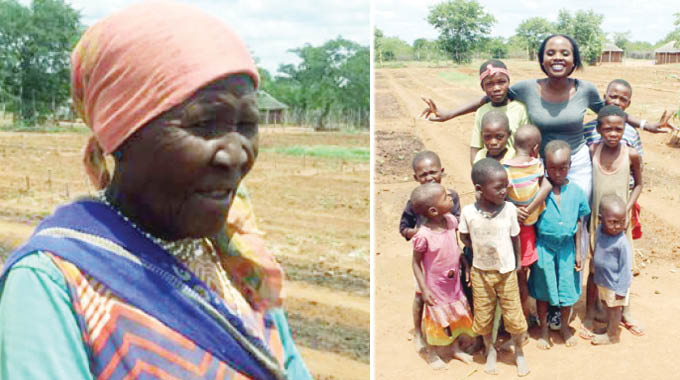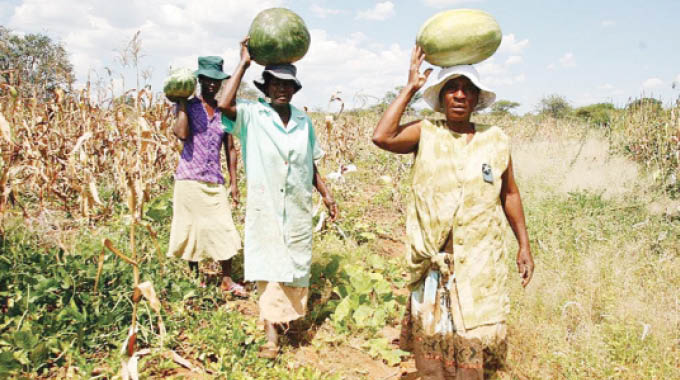Unpacking San people’s culture

Mthabisi Tshuma, Chronicle Correspondent
UNKNOWN to some, the San people were the first Bantu people to occupy present day Zimbabwe yet they have lived as aliens for the last century.
In the past, all they knew was to hunt and gather with meat and fruits being their staple food, but now, they have had to adjust and join a whole lot of Zimbabweans, imitating their lifestyle. Such has been the life of the San tribe in the country.
Also known as the Bushmen or Basagwa, the San are found in remote areas in Southern Africa, particularly Angola, Botswana, Namibia, South Africa, Zambia and Zimbabwe.
In Zimbabwe, the community is found on the outskirts of Bulilima District in Matabeleland South province and in Tsholotsho District in Matabeleland North. Resultantly, they have lived under the dominion of BaKalanga and Ndebele tribes for the past century.
An estimated population of over 5 000 San is found across the country. Just like any tribe, their culture is rich and filled with emotional history as the way they dress, their facial appearance and dances are part of the only features which still resemble their being as the Tswao or Khoisan as most people refer to them.
Eighty four-year-old Elizabeth Moyo from Makhululela village in Bulilima said their culture is eroding with time in terms of dress because of Westernisation.
“The men in the past used to wear animal hide loincloth but that has changed as they have been Westernised and are now wearing ordinary clothes which many argue as civilised wear.
“The women also on the other hand, have followed suit, but have a form of wear which differentiates single and married women,” said Moyo.
“Married women wear a cloth wrapped from the shoulders diagonally to the waist as a way of showing that they are taken. The cloth is worn at all times. For the children, they have moved from ancient times and wear ordinary clothes, but they like to let their skin be visible.”
A chat with the San community in Bulilima showed that they still feel marginalised and denied liberties as equal citizens of the country.
As the wounds of being segregated in communities are still fresh, the San are trying to heal through a traditional San healing dance called Ibhoro. Back in the days, the dance was performed for thanksgiving or when someone got ill and would consult the healers. that was done, the healer would call other traditional healers to plan for the healing ceremony. On the day of the dance, villagers were invited to take part and assist by singing the Ibhoro song called Ng’ka cii in Tjwao.
The singing and dancing are done to invite the tora (angels). When the traditional healers are in contact with the tora, they are then able to heal the sick person through ukulumeka. Normally they bite the painful part of the body with their mouth and take out the sickness. The dances also identify with Muariara (the super being).
In the background of the dance, bells rage on to give a melodious ryhthm.
Now, the dance is being performed to address the San people’s grievances of being secluded in the country’s top structures. It has also become an entertainment piece with the dances mostly performed by children who when seen performing, leave many in awe.
Bulilima West legislator Dingumuzi Phuti who was among those who witnessed the dance being performed recently said it was high time the San people are recognised nationally.
“The San people are an important part of our heritage. Zimbabwe is not complete without them thus strides should be taken to put them on the spotlight.
“It is the mandate of every citizen to ensure that marginalised communities are given a voice and their voices are heard. The media should also give them a platform – there is need to give them more space on radio and television shows as well as print media, columns should be availed to them so that they give people an insight of their culture,” Phuthi said.
Davy Ndlovu, the Director of Creative Arts and Educational Development Association, an organisation which promotes San language and culture, said the dances need to be recognised in the country.
“The dances and songs of the San people need to be recognised nationwide so that the community feels part of the citizens. On their part, the San need to record the dances and songs so that they are preserved for future generations in their tribe,” said Ndlovu.
In 2013, strides were made by the San for their culture to be known as they hosted a successful Bush Cultural Festival in celebration of the recognition of their language in the new constitution. The festival was also held to re-unite all the San people in Zimbabwe.
Other festivals which have played a part in enabling them to be known include the Shangano Arts Festival which is a provincial mobile arts showcase that creates a platform for the exhibition and celebration of the rich cultural diversity found in Matabeleland North.
Films like The Last Bushmen of Zimbabwe which profile the cultural heritage and contemporary lifestyle of the San community in Gariya and Tsholotsho have been shot. This still has not been sufficient to incorporate the San’s culture into the country’s arts sector.
Festivals held in the country may want to consider including San performances on their lineups as their dances are quite entertaining. The Jikinya Dance Festival, Chibuku Neshamwari dance competitions among others should also find a way of celebrating the San culture. – @mthabisi_mthire.












Comments